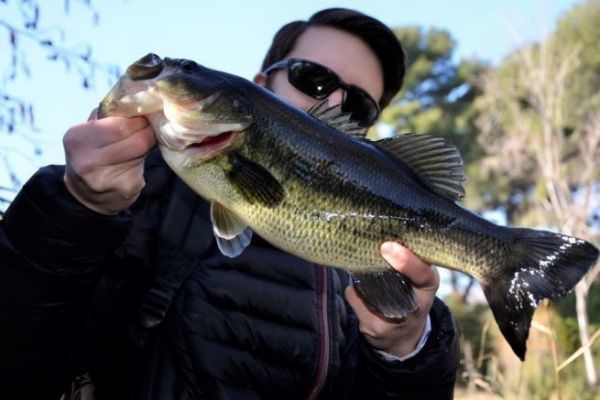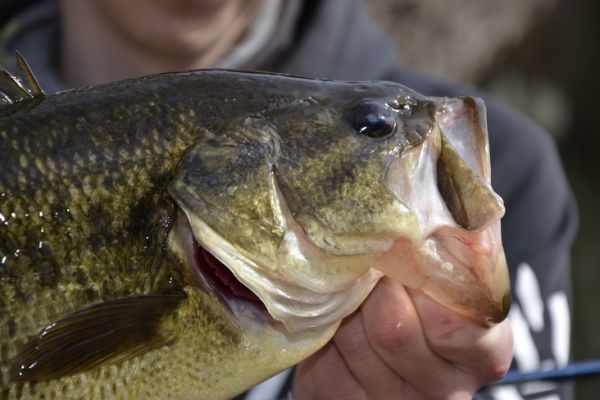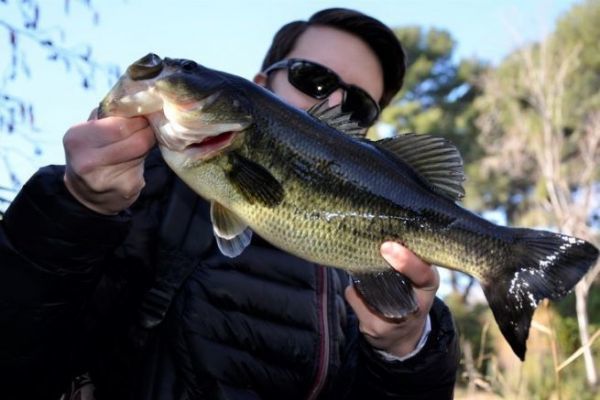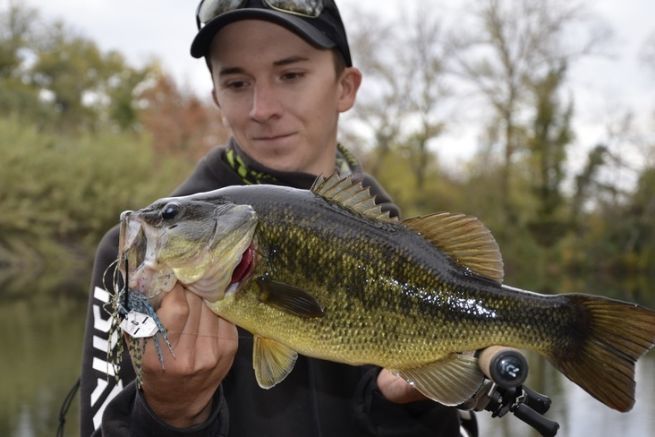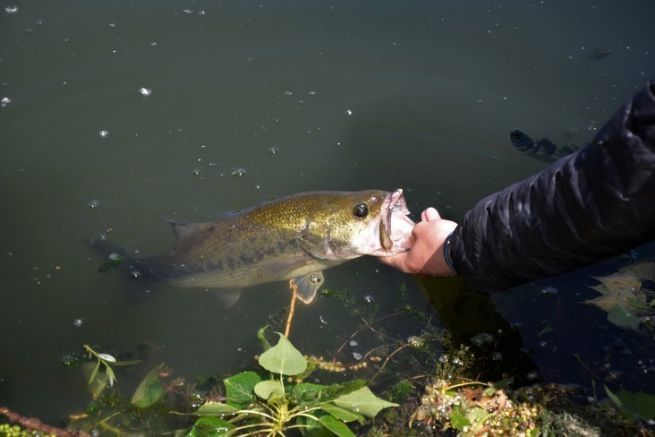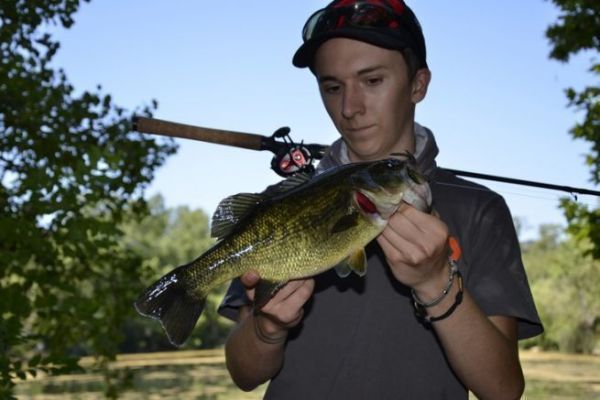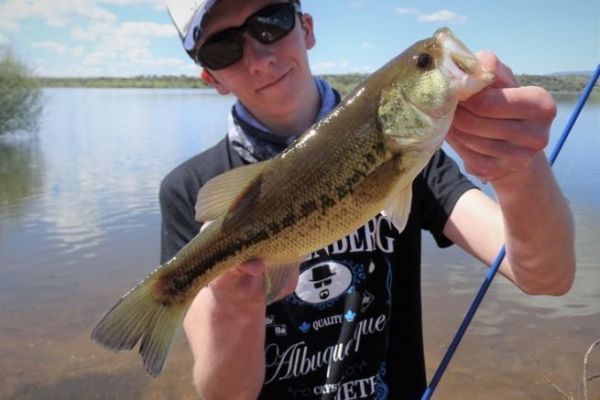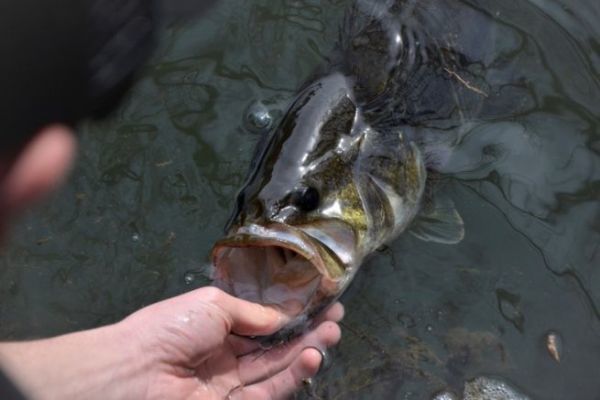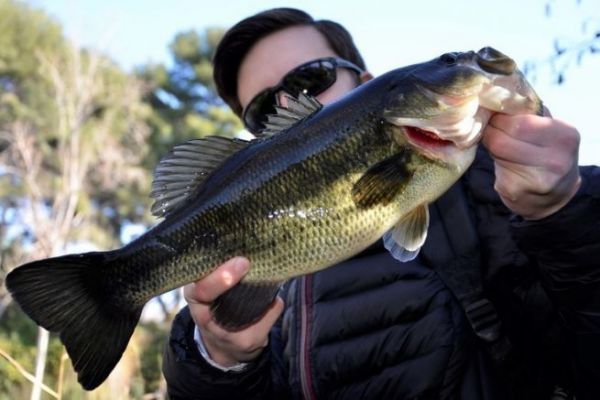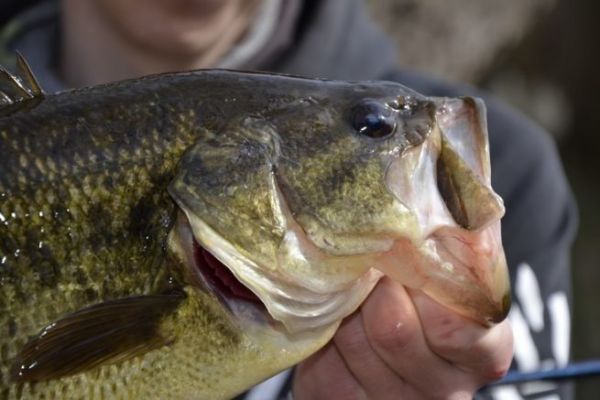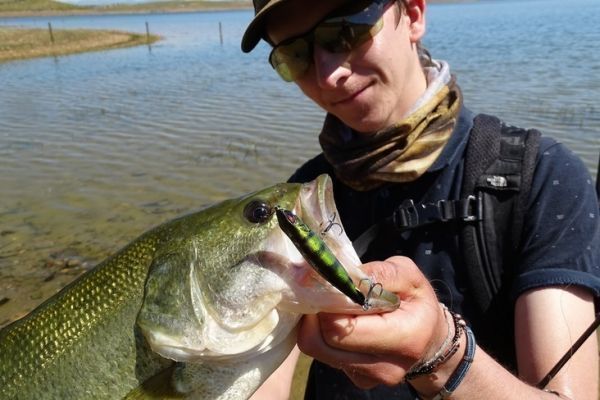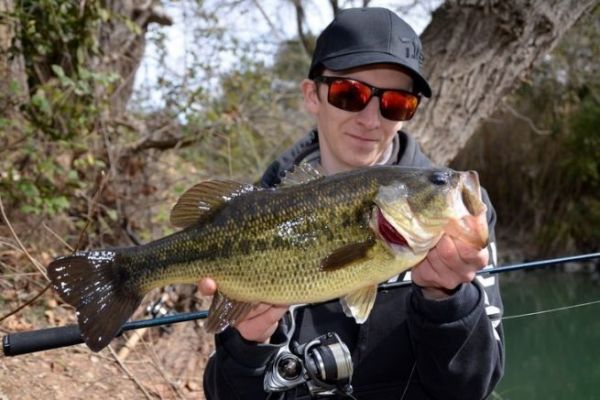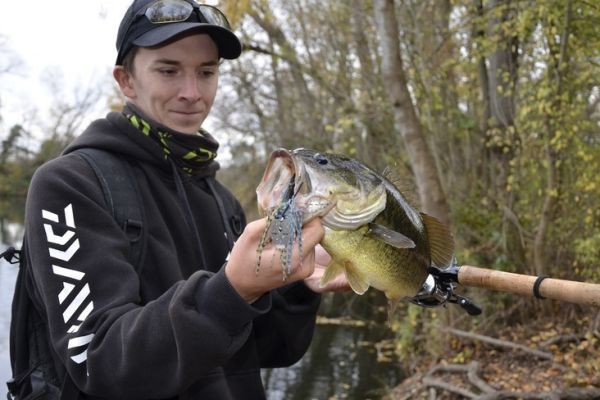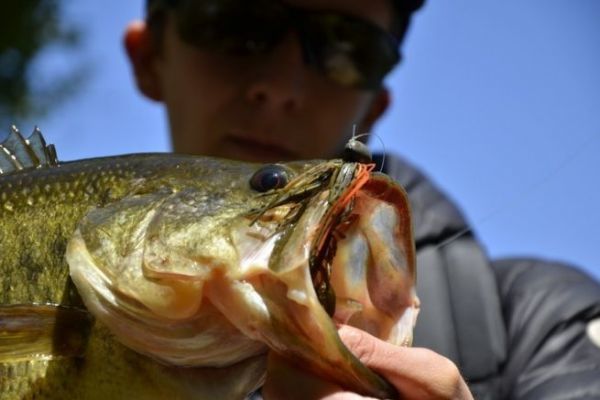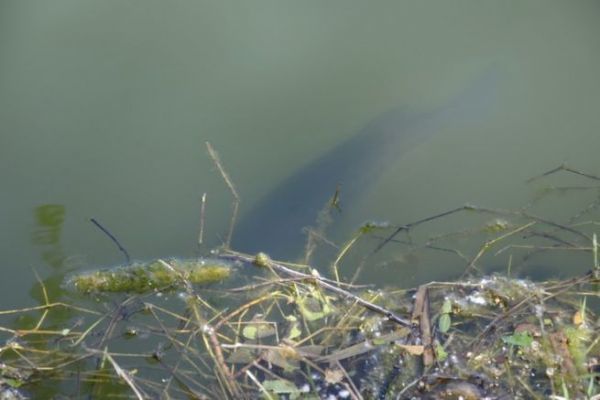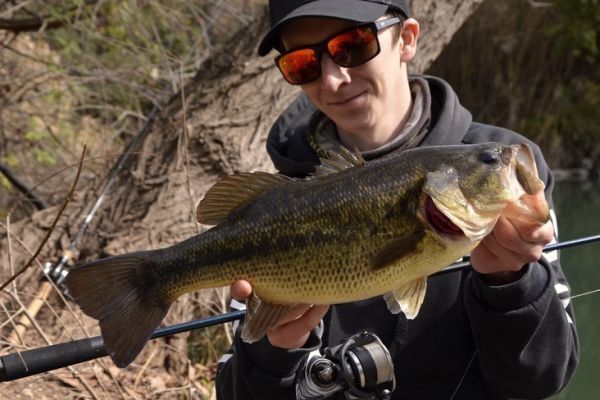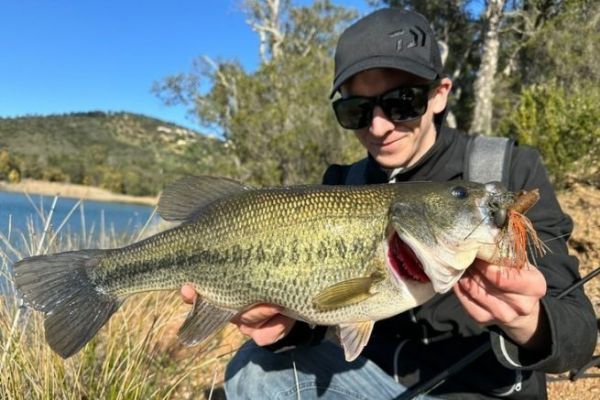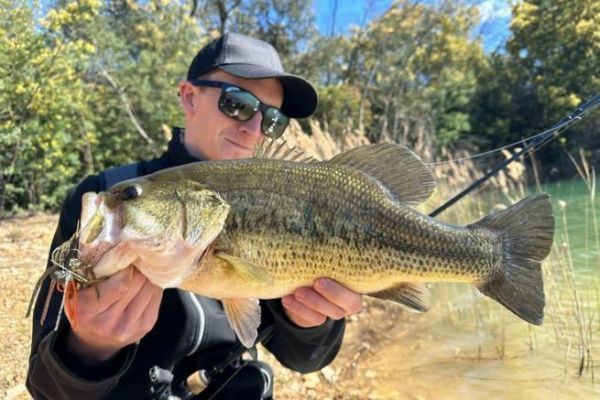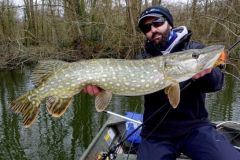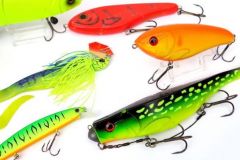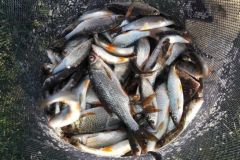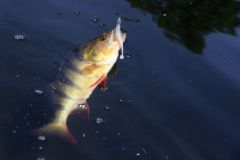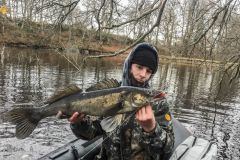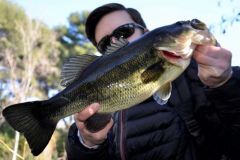The suspending minnow jerkbait
Black bass metabolism slows down during the winter season, they feed much less frequently and are not necessarily inclined to chase prey over long distances. Fishing with long pauses is therefore very effective, especially when the water is clear.
Minnow jerkbaits have always been very productive for black-bass fishing in all seasons, but their suspending version really comes into its own in winter. It imitates perfectly a small wounded prey during animation and allows us to make very long pauses in the water layer. A sinking or floating lure forces us to animate faster, whereas the suspending version can be animated extremely slowly, without the risk of hooking or rising to the surface. It is often used to fish close to schools of forage fish.
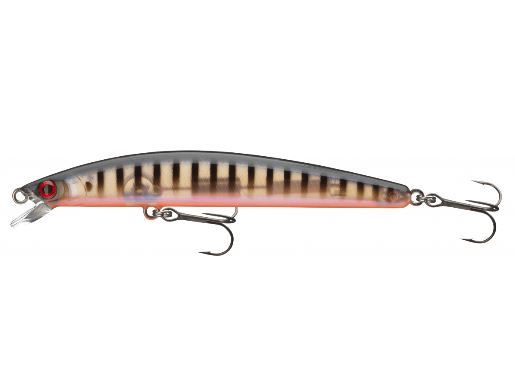
Bladed jigs
Bladed jigs, also known as chatterbaits, are a paddle version of the classic rubber jig. They allow you to cover a lot of ground and fish in the cover easily, as they are armed only with a single hook. In winter, very light models weighing less than 7 to 10 grams and featuring a large paddle allow slow, linear fishing.
The inclination of the blade of a bladed jig tends to make it rise in the water layer when reeling, which is why you can pass very close to the bottom without ever touching it if it's cluttered with branches or stones. The vibrations it emits are reminiscent of a fish in distress trying to escape, which is particularly irritating for lethargic black bass. In winter, natural colors are particularly effective, as fish take the time to observe it before seizing it.
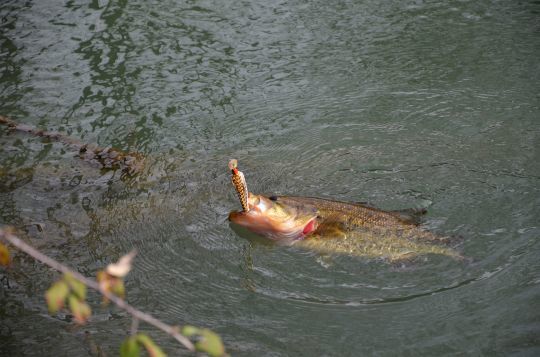
Scratching crayfish
The crayfish, or craw, is a classic of winter black-bass fishing. Mounted on a Texan lead head or carolina rig, it allows you to fish extremely slowly, on very precise spots where you know fish are to be found. It's all the more effective when fitted with floating appendages that undulate at the slightest touch and trigger attacks.
Crayfish imitations are quite effective when these appendages are small. This may seem obvious, since a black-bass doesn't necessarily want to have the inside of its mouth pinched by a crayfish with big claws.
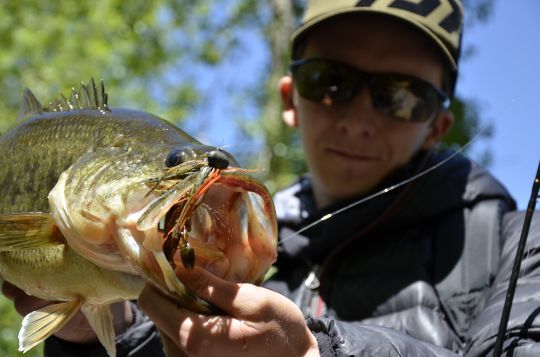

 /
/ 